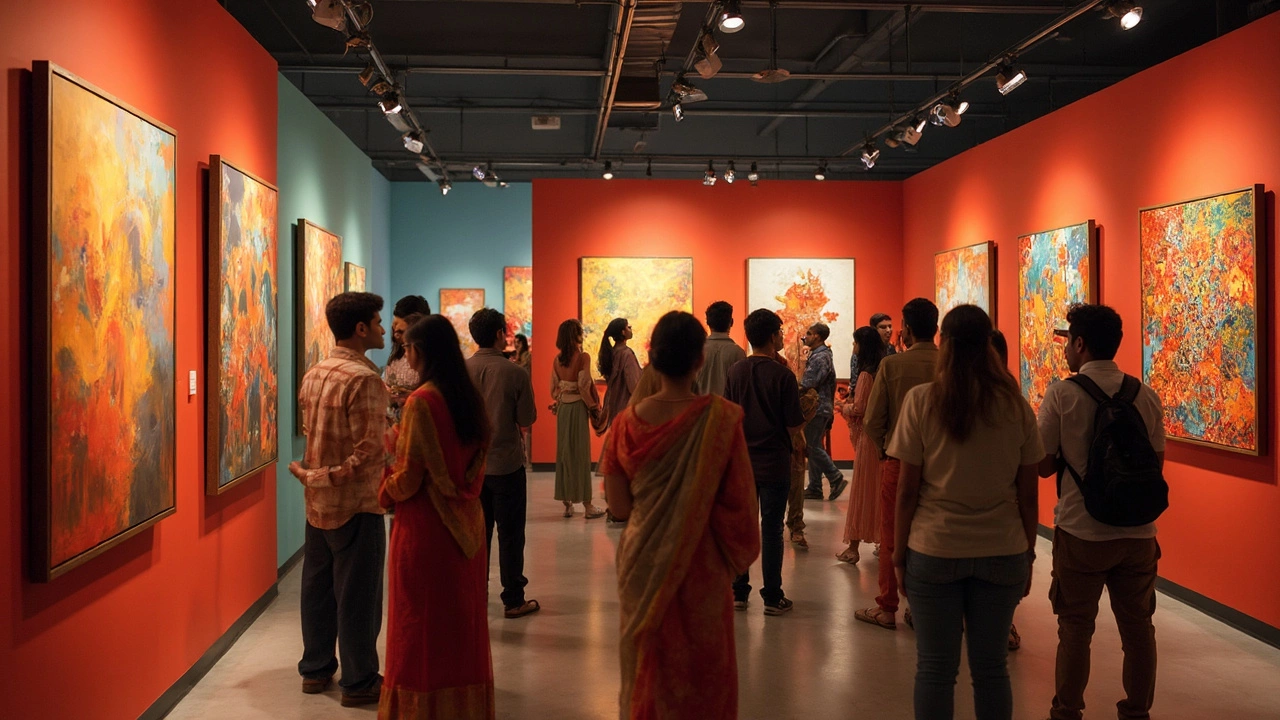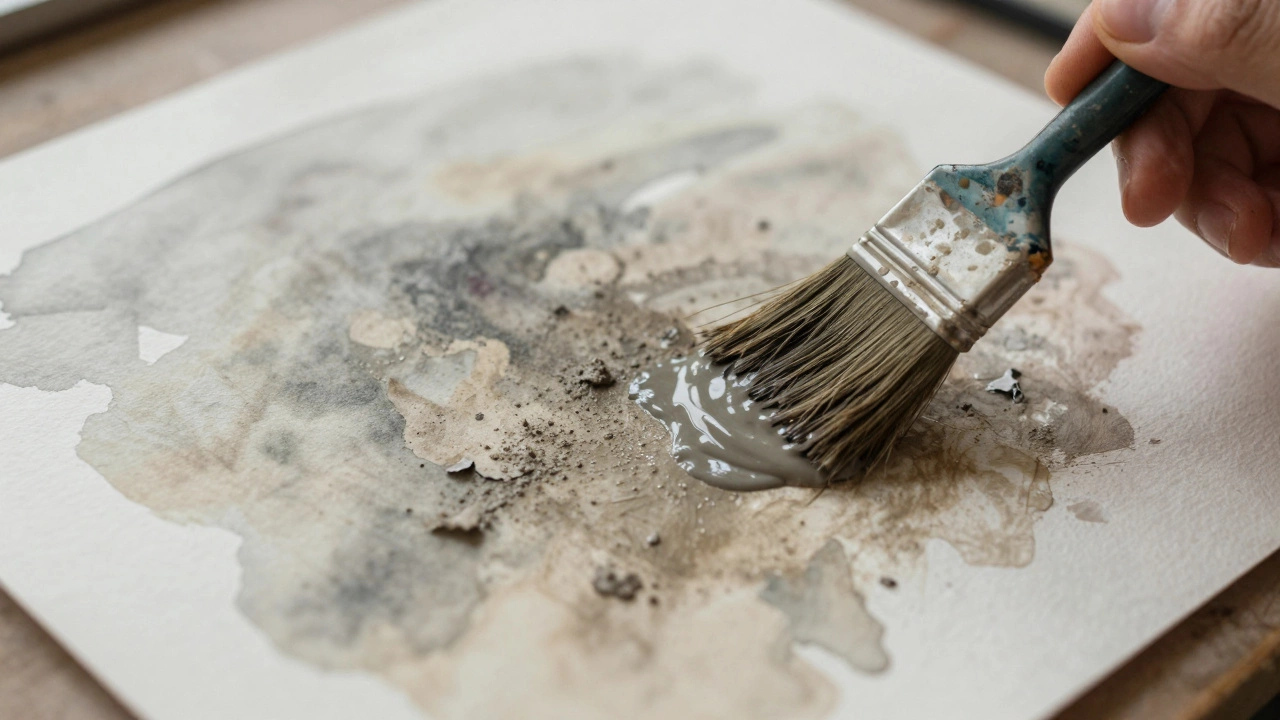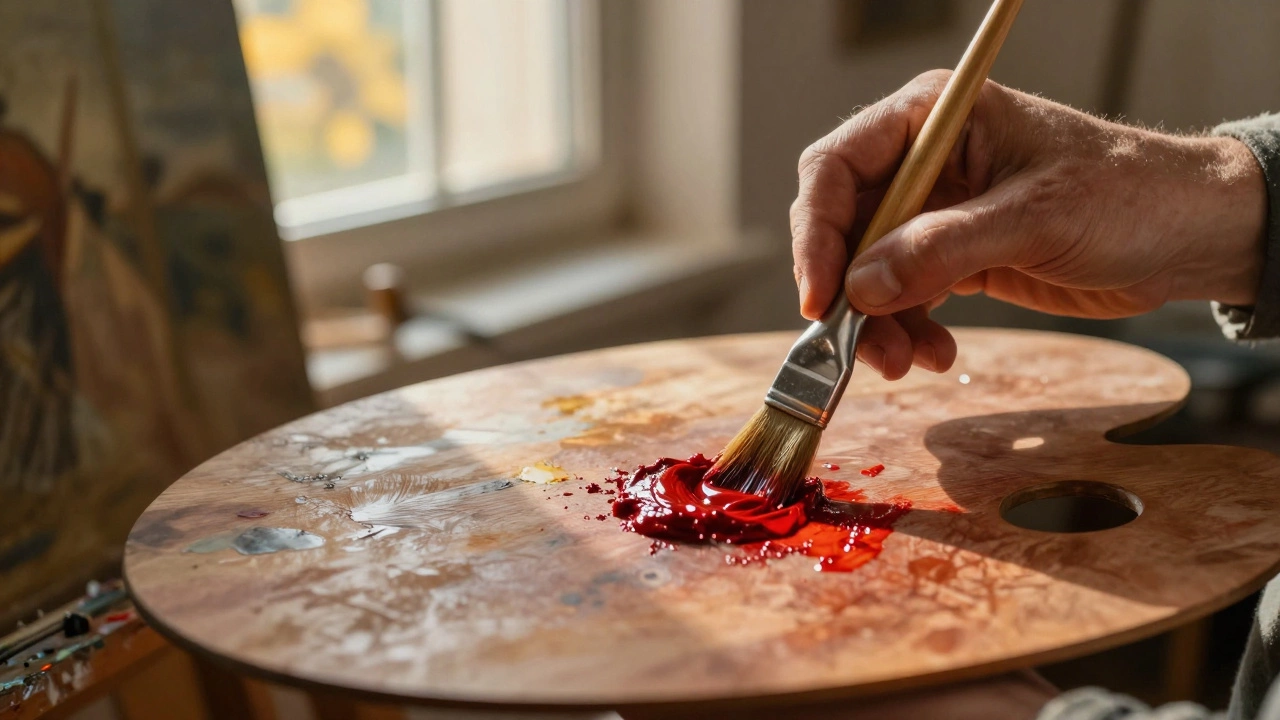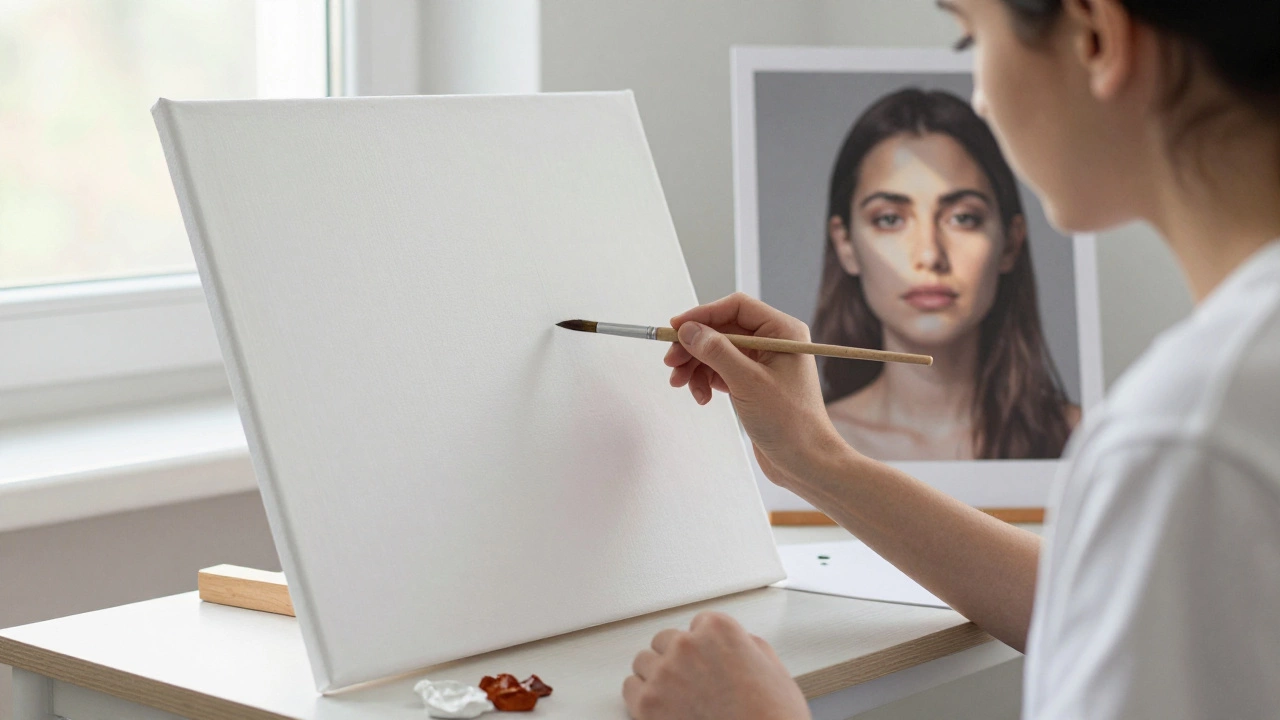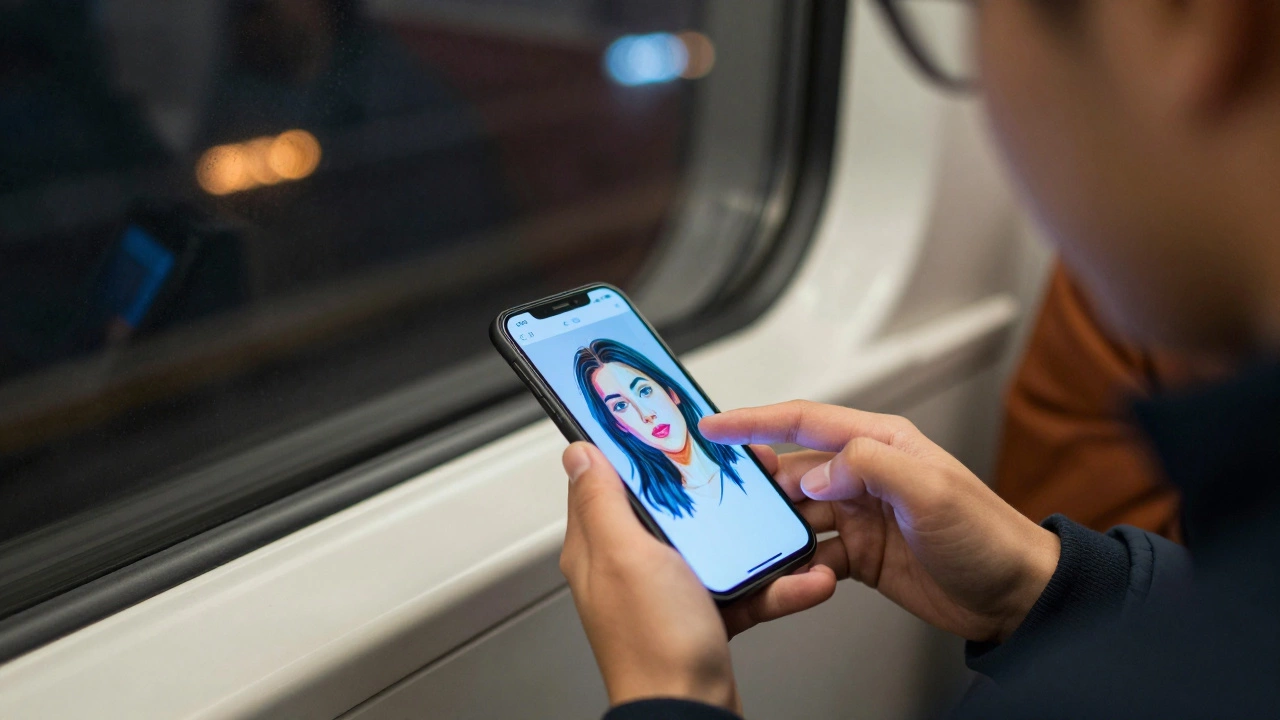If you’ve ever stared at a painting of a bunch of colored squares or a sculpture made from scraps of metal and wondered if it’s really modern art, you’re definitely not alone. There’s a lot of buzz around “modern” art, and people often use the word for anything that looks new or weird — but there's actually a clear way to tell what counts as modern.
Start with this: 'Modern art' isn’t just a catch-all for anything that looks different. There’s a real time frame. Most experts say modern art covers the period from about the 1860s to the 1970s. So yes, that wild-looking Picasso is modern art, but a Chelsea gallery's digital piece from last week? Not so much — that's contemporary.
The easiest way to test if art is modern? Ask yourself when it was made, but also look for certain signs: does it focus on expressing ideas or emotions, breaking with tradition, or showing off color and form in totally new ways? Modern art wanted to smash old rules. Artists back then wanted to experiment, to show things in ways nobody had before. If the art makes you stop and think “I never would have thought of that,” you might be dealing with something modern.
- What Makes Art 'Modern'?
- Key Features to Look For
- Modern vs. Contemporary: The Mix-Up
- Spotting Modern Art in the Wild
What Makes Art 'Modern'?
So, what exactly takes a painting, sculpture, or visual experiment and lands it in the modern art category? It’s not just about how it looks—it’s mostly about when it was made and what the artist was trying to do. The key is that modern art refers to work made roughly between the 1860s and the 1970s. Before that, art was all about lifelike portraits, landscapes, and big historical scenes. Modern artists started asking, “Why does art have to look like anything at all?”
This is where things got interesting. Artists like Claude Monet, Vincent van Gogh, and Pablo Picasso wanted to break the old-school rules. They used visible brushstrokes, weird colors, and showed real feelings. They painted everyday people, city life, and sometimes even just shapes or blocks of color. If you’ve seen a painting of a water lily that basically looks like a blur? That’s Monet, and that’s modern art.
Here's what usually sets modern art apart:
- Time period: Made between the 1860s and the 1970s.
- Going against tradition: Instead of copying what’s seen in real life, artists experiment. They play with shapes, lines, and new ideas.
- Focus on materials and process: Sometimes, the way something is painted or sculpted is as important as what it shows.
- Showing emotions and ideas: Artists want you to feel something or think differently.
One quick tip: If a painting makes you wonder how (or why) it was made, or if it just feels edgy for its time, you’re probably looking at modern art.
| Famous Modern Art Movements | When They Happened |
|---|---|
| Impressionism | 1870s–1890s |
| Cubism | 1907–1914 |
| Fauvism | 1905–1910 |
| Abstract Expressionism | 1940s–1950s |
These art movements didn’t just change museums—they changed how people understood visual ideas. By knowing the era and what the artist was aiming for, you’ll have a way better shot at pinpointing real modern art the next time you visit a gallery or scroll through art online.
Key Features to Look For
If you want to figure out if you’re looking at modern art, spotting the common features is super helpful. Modern art isn’t about making stuff look pretty or realistic. Instead, it’s all about breaking away from what people expected before the late 1800s. Artists took bold steps and weren’t afraid to shake things up. Here’s what to keep an eye out for:
- Non-traditional subjects: Earlier art was packed with religious, mythological, or historical scenes. Modern artists wandered off that path and started painting everyday life, city scenes, or even just pure shapes and colors.
- Playing with color and form: Modern art often ditches the normal color rules. You might see faces painted green, skies that are hot pink, or objects reduced to simple, bold shapes. Things often look flat or distorted on purpose.
- Visible brushstrokes: Instead of hiding the brushwork, modern painters liked to show it off. Think bold dabs, thick textures, or even just splashes and drips (hello, Jackson Pollock!).
- Abstract tendencies: Some modern art doesn’t even try to look like real life. Cubism (like Picasso’s work) breaks images into bits and pieces, while abstract artists might not paint anything you recognize.
- Focus on ideas: Here, the meaning sometimes matters more than what’s on the canvas. Some works are mainly about a feeling, a protest, or trying out new materials and methods—like mixing sand in with paint, or making sculptures out of trash.
Here’s a quick table showing some styles, their famous artists, and when they were big. These styles all fall under modern art and can help you spot the real deal:
| Style | Main Artists | Years Active |
|---|---|---|
| Impressionism | Claude Monet, Edgar Degas | 1870s–1890s |
| Cubism | Pablo Picasso, Georges Braque | 1907–1920s |
| Fauvism | Henri Matisse, André Derain | 1905–1910 |
| Abstract Expressionism | Jackson Pollock, Mark Rothko | 1940s–1950s |
Don’t get tripped up by art that looks wild just because it’s new—check for real connections to modern art styles and time periods. Spotting these features in a piece is a solid hint you’re looking at modern, not just “different.”
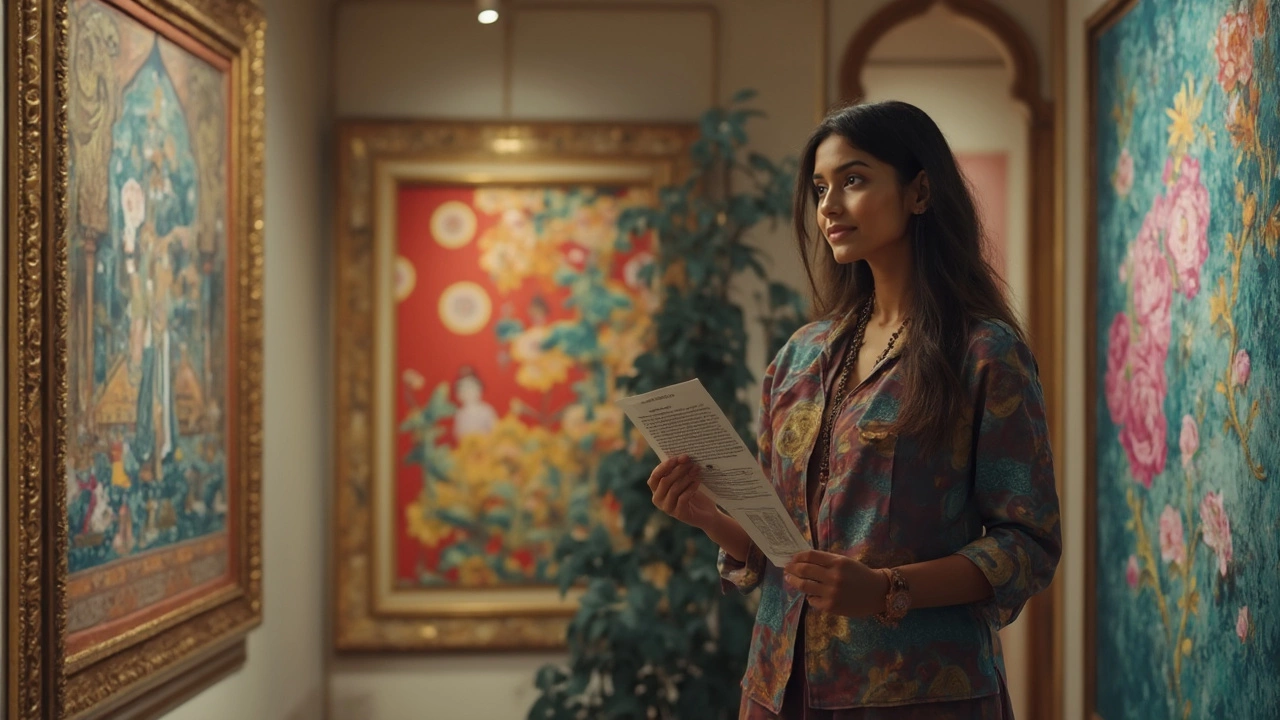
Modern vs. Contemporary: The Mix-Up
This is where people usually get tripped up and mix their words. Modern art has a set timeline—think 1860s to the 1970s. That's everything from Monet's dreamy water lilies to Andy Warhol's bright soup cans. After the 1970s, the art world decided it was time for a new label: contemporary art. That just means art made from around 1970 until today—yes, even that banana duct-taped to a wall counts as contemporary (seriously, it sold for well over $100,000 in 2019!).
Here’s a quick cheat sheet to help untangle the mess:
- Modern art: 1860s-1970s, break-the-rules attitude, first time artists tossed out old techniques, big on ideas and personal expression.
- Contemporary art: 1970s-now, even more experimental, wide range of materials (video, installations, digital), artists often comment on society, politics, or technology.
If you’re in a museum and see something really bold that’s also a hundred years old, you’re probably looking at modern art. If it looks like it just rolled off an Instagram feed last year, it’s probably contemporary art.
| Type of Art | Main Years | Famous Names | Popular Materials |
|---|---|---|---|
| Modern | 1860s-1970s | Picasso, Kandinsky, Warhol | Oil, canvas, collage |
| Contemporary | 1970s-now | Damien Hirst, Yayoi Kusama, Banksy | Video, neon, digital, found objects |
The difference really comes down to when the art was made and the sorts of ideas, tools, or issues the artist is tackling. Next time someone uses "modern" and "contemporary" like they mean the same thing, you can set them straight!
Spotting Modern Art in the Wild
Out in the real world, it’s pretty easy to second-guess yourself in front of a piece at a museum or on the street. So how do you actually pick out modern art from everything else? Here’s what to keep in mind when you’re face-to-face with something unusual.
First, check the date somewhere on the display or the museum placard. If it’s from roughly 1860 up through the 1970s, there’s a good chance it qualifies as modern art. Names like Picasso, Kandinsky, Duchamp, and Mondrian usually point straight to this era.
Besides dates and names, here are some markers that show you’re staring at modern art:
- It breaks the old rules. Expect odd color choices, strange perspectives, and subjects that don’t always make sense.
- It aims for emotion or ideas more than lifelike looks. Van Gogh’s "Starry Night" is basically the world swirling in feelings, not accuracy.
- Materials can get weird. Take Duchamp’s "Fountain," which is literally a urinal. Not kidding—that’s in the Museum of Modern Art.
- The artist is trying to say something. Sometimes it’s political, sometimes it’s just, “Hey, art can be anything.”
Here’s a simple cheat sheet comparing art eras you’ll probably run into while out and about:
| Era | Rough Years | Main Features |
|---|---|---|
| Classic | Before 1850 | Realistic, religious or myth subjects |
| Modern Art | 1860s–1970s | Experimental, bold color, strange forms |
| Contemporary | 1970s–now | Media art, digital, politics, anything goes |
Art historian Sarah Greenough once summed up the spirit of modern art by saying,
“Modern artists wanted to change not just how art looked, but how people experienced art—and sometimes even the world around them.”
When in doubt, look for a sign that tradition’s been tossed out the window. If an artwork seems to shock, puzzle, or even annoy, chances are it’s got something modern about it. The more you practice spotting these signs, the quicker you’ll get at picking modern art out of a crowded gallery—or even on a random city wall.
